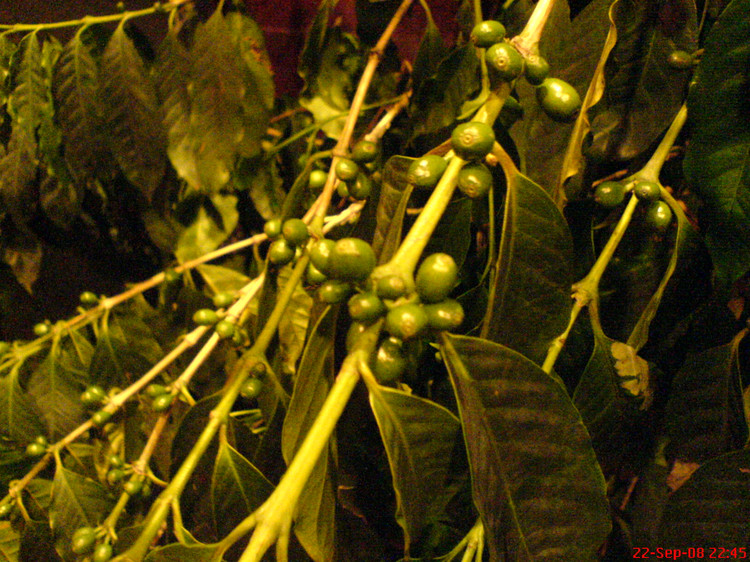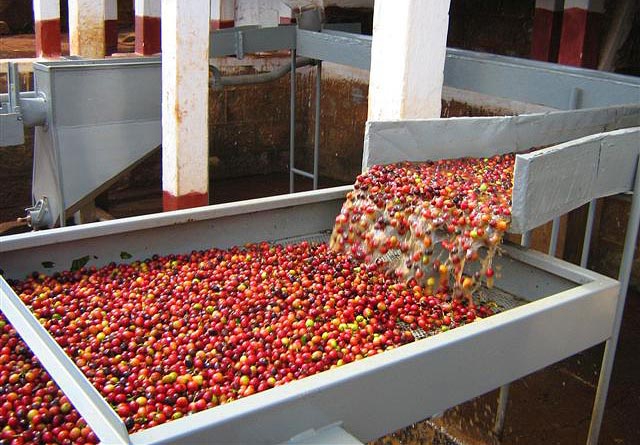World Fine Coffee beans: an introduction to the authentic Flavor of Taiwan's Gukeng Coffee beans

Gukeng Coffee originated in Huashan area, Gukeng Township, Yunlin County, Taiwan. At a time when the ancient pit on the Tropic of Cancer is full of sunshine and rainfall, the Taiwan native coffee produced is sweet, fragrant and not bitter, and has its own local flavor. It belongs to the best coffee in the world. Because it was accidentally found that Gukeng is quite suitable for growing coffee regardless of climate, soil or drainage, Gukeng Township has become one of the few places in Taiwan where high-end coffee can be produced. Gukeng coffee belongs to Arabica, because the method and time of baking and extraction are different from other coffee producing areas. Gukeng coffee has a special flavor and is known as "the hometown of Taiwan coffee".
According to the Chronicles of Yunlin County, Gukeng coffee was introduced during the Japanese occupation. After the Government House of Taiwan introduced coffee beans from Brazil, it selected Taitung, Mizuho, Kaohsiung, Yunlin Gukeng and Nantou Huisun Forest Farm as trial cropland, and finally found that Yunlin Gukeng was of the best quality and became a tribute to the Japanese emperor during the Japanese occupation period. Gukeng coffee has the nickname "Imperial Coffee".
Coffee was introduced by the Dutch in the early days of 1624, but it was not widely promoted because it was limited to internal drinking among the Dutch.
In 1931 (Rizhaohe), Mr. Kimura was planted and cultivated in the area of Chiayi and Yunlin Gukeng in northern Tainan.
In 1941 (the 16th year of Rizhaohe), most of the raw beans were shipped back to Japan. The coffee planting area of Hebao Mountain in Huashan area of Gukeng Township is as wide as 75 hectares, and it is known as "the largest coffee factory in the far East" in its heyday.
In 1945 (Rizhaohe 20 years), the area of coffee cultivation in Huashan area expanded to 113 hectares after the war. However, as the price of the cash crop fell, most of the coffee fields were abandoned or transferred for other uses.
In 2000 (1989), it was not until it was publicized by the Taiwan government that local farmers returned to widespread production and marketing.
In 2003 (1992), the Yunlin County government held the first Taiwan Coffee Festival in Jianhu Mountain Amusement area and invited Mr. Huang Gengzi to attend.
In 2006 (1995), the planting area of coffee in Gukeng Huashan area was about 100ha, with an output of more than 10000 kg.
Because of its low output and good reputation, there are a considerable number of other brands of coffee outside Taiwan posing as Gukeng Coffee. For this reason, Gukeng developers intend to use "23.5" as the brand name as the symbol of the original Gukeng coffee. On the other hand, the 23.5 is taken from the position of 23.5 degrees north latitude of Gukeng.
Source:
Gieson's own baked blog
Important Notice :
前街咖啡 FrontStreet Coffee has moved to new addredd:
FrontStreet Coffee Address: 315,Donghua East Road,GuangZhou
Tel:020 38364473
- Prev

World fine coffee beans: Ethiopia Jiedipu Cocona processing plant washing Ye Jia Xue Fei G1
Gedeb is an area located 60 km south of the town of Yegashefi, named after the local Gedeb people. The Kokanna processing plant located in the town of Kokanna concentrates coffee berries acquired near Gedeb for fine washing and export under the name Gedeb. The coffee fruits collected here are all produced in the highland of about 1900 meters. The processing plant strictly selects the ripe red fruits.
- Next

World boutique coffee beans: Lake Tawa, Sumatra, emerald Manning has a rich and thick taste
Emerald Manning Bean Green Mantning medium Baking Sumatra Lake Tawar Mandheling, also known as Gayo Mandheling / Gayo Arabica / Takengon Mandheling, Lake Tawa is located in the Gayo mountain area north of the province of Nanggroe Aceh Darussalam.
Related
- Guji coffee producing area of Guji, Ethiopia: Humbela, Shakiso, Wulaga
- What is the most expensive variety of Qiloso in BOP multi-variety group?
- How to store the coffee beans bought home?
- Why are Yemeni coffee beans so rare now?
- Ethiopian Sidamo all Red Fruit Sun Sun Santa Vini Coffee beans
- SOE is mostly sour? What does it mean? Is it a single bean? what's the difference between it and Italian blending?
- Is Italian coffee beans suitable for making hand-brewed coffee?
- How to choose coffee beans when making cold coffee? What kind of coffee beans are suitable for making cold coffee?
- Just entered the pit to make coffee, what kind of coffee beans should be chosen?
- Can only Japan buy real Blue Mountain Coffee? What are authentic Jamaican Blue Mountain coffee beans?

